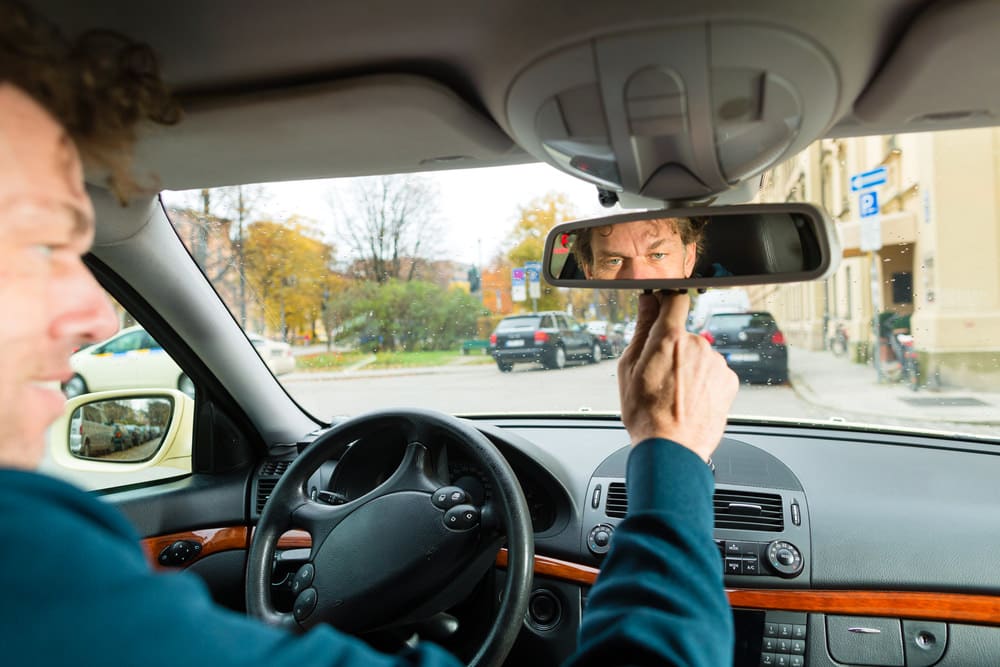

Auto mirrors provide essential visibility to the rear and sides of a vehicle. However, they can also be sources of discomfort – being blinded by the glare of headlights behind you through your rearview mirror is no fun, and reduces your safety on the road. Thankfully, it’s simple to adjust the mirror by using the switch at the bottom of the rearview mirror.
What does the switch do?
If you have a manual rearview mirror, there’s a switch or tab at the bottom. It should move up and down. Changing the switch’s position changes the way the mirror works. Flip it one way and you’re in daytime driving mode, with everything crisp and clear. Flip it the other way, and it changes to nighttime driving mode. The reflection is dimmer (and harder to see when it’s light outside), but it is meant for nighttime driving and dims the glare from headlights behind you.
How the switches work
So, how does the mirror switch actually work? It’s pretty simple, really. Your rear view mirror glass isn’t actually flat – it’s a wedge of glass that’s thicker on one end than the other. When you flip the switch at the bottom of the rearview mirror, the wedge moves. What this does is change the way light passes through it and how it’s reflected back.
In daytime driving mode, the back surface of the mirror is what reflects light and images. When you flip the switch and change the orientation of the mirror glass, the front section is responsible for what you see. Because the light and images must first travel through the back side of the glass before hitting the front and bouncing back to you, the image is dimmer and the glare of headlights behind you is greatly reduced.



